San Marino, an independent republic a stone’s throw from the Romagna Riviera. A UNESCO World Heritage Site on par with Mount Titan, the highest of the hills on which the “Most Serene Republic” stands, San Marino has a history as ancient as it is unique. The story is handed down in this land that it all began in the fourth century AD when a Dalmatian stonecutter named Marino took refuge on Mount Titan to escape persecution against Christians. There, Marino founded a congregation and before he died, according to legend, he allegedly uttered to his followers the words “I leave you free from the emperor and the pope,” words that are still the foundation of theRepublic’s independence today. An independence preserved with strength and tenacity century after century resisting annexation attempts primarily by the Papal State. San Marino since ancient times has been a small and thriving laboratory of democracy and, not surprisingly, the motivation with which UNESCO declared it a World Heritage Site in 2008 calls it “evidence of the continuity of a free republic since the 13th century.” Today San Marino is a popular vacation spot, relying on a perfect blend of art, culture, hospitality and entertainment. Among castles, palaces and churches San Marino holds a little treasure waiting to be discovered, but it is also a perfect base for Romagna, its beaches and its wild nightlife. Here are 10 places not to miss in San Marino.
Council Building, or Palazzo Pubblico, is the beating heart of San Marino’s political life and history. Council Building is located in Piazza della Libertà, although around here everyone calls it “Pianello,” and stands on the site of the Domus Comunis Magna, built between 1380 and 1392 and repaired several times. The current design of the building dates back to the late 19th century and is the work of Francesco Azzurri, president of the Accademia di San Luca in Rome, and it was shaped by local stonemasons who used stones extracted from quarries on the Titan. In more recent times it was renovated by archistar Gae Aulenti and inaugurated again in 1996. The facade is richly decorated with numerous symbols: the Coat of Arms of the Republic and the four castles of Serravalle, Fiorentino, Montegiardino and Faetano. There are also icons of smaller localities acquired over the centuries by the Republic. There are many special features of the palace as well as large and small masterpieces kept outside and inside the building, but the most resplendent treasure is surely the Council Chamber where the 60 members of parliament of the Titan have been meeting since 1848.
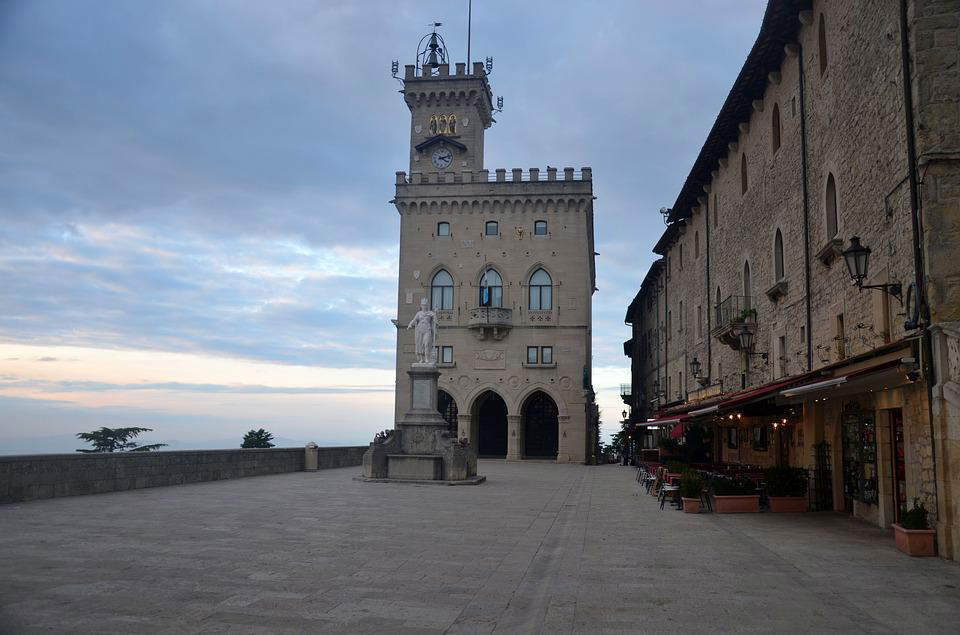
Guaita, Cesta and Montale are the three symbolic feathers of the Titan, bulwarks defending freedom, sacred to San Marino citizens. These three towers have for centuries watched over the independence of the Most Serene Republic of San Marino and today are one of the most beloved sights for visitors. Torre, or rather, Rocca Guaita has a pentagonal base, dates back to the 10th century, but has been reinforced several times since. The people took shelter here during sieges, and a 17th-century stone coat of arms of the Republic stands out on the entrance door. The inner wall is limited by the bell tower and the Penna tower, built several centuries later. The upper gate, which can be reached by means of a staircase, is defended by a bertesca dating from 1481. On the second peak of Mount Titan, the highest, at 756 meters above sea level, stands instead the Cesta Castle. Built in the late 11th century, it, too, is a tower with a pentagonal plan and was the seat of the guardhouse. Today it houses the Museum of Ancient Arms. Finally, the Montale tower dates from the late 13th century and is the smallest in size, but it played a strategic role for centuries since it was used as a lookout post.
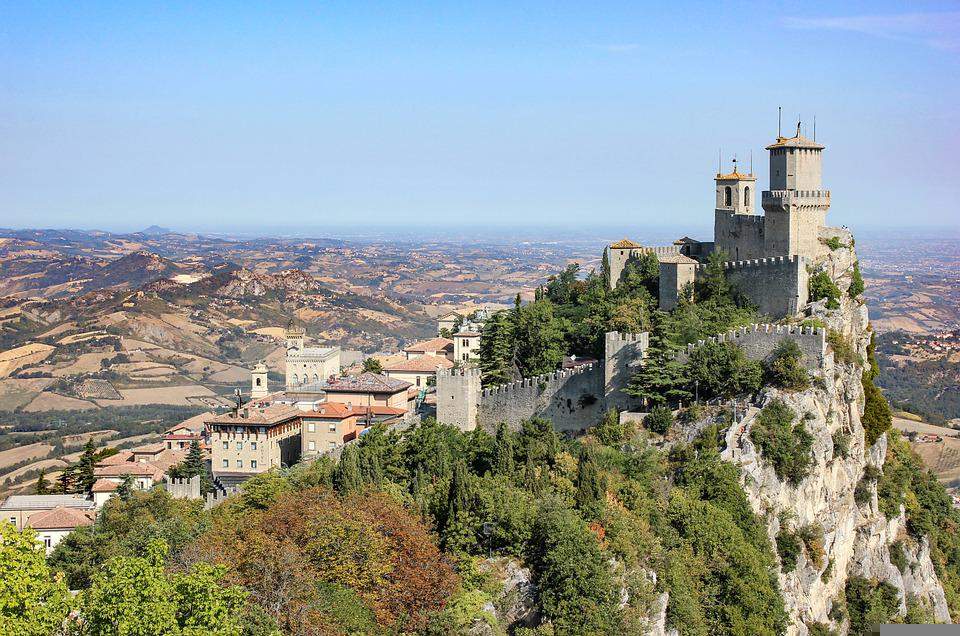
The Basilica del Santo is a 19th-century building built to the design of Bolognese architect Antonio Serra on the site of the ancient 16th-century parish church. Inside the basilica are preserved the relics of Saint Marino, founder of the San Marino community, making it the place of greatest spiritual value for the entire population. The basilica, consecrated in 1855, is in neoclassical style with a pronaos of Corinthian columns. Inside, however, the structure has three naves, of which the central one is the most majestic, with seven altars. Also inside, the throne box reserved for the Captains Regent, the highest offices representing the State of San Marino, dating from the 17th century, stands out. The massive bell tower was Romanesque in style, but was rebuilt in the 17th century. The interior has three naves with seven altars. To the right of the Basilica is the 16th-century church of St. Peter. In addition to its artistic value, the Basilica of San Marino has considerable sacred and religious value, and for this reason it has always been very dear to all San Marino people

The convent of the Friars Minor Conventual, founded in 1361, is the oldest sanctuary in San Marino. It has been restored numerous times over the centuries, and today only the facade and portico have recently been restored to their original lines. The convent, which was the seat of the Studio Sammarinese, originally stood in the locality of Murata: it was Pope Clement VII who granted permission to move it to a safer location because of the constant raids by the Malatesta. First of all, worth seeing is the wooden crucifix on the high altar, which dates back to the 14th century and is believed to have come from the ancient Church of Murata. In the two cloister loggias are the San Marino Museum and Art Gallery, inside which are several treasures including a depiction of St. Francis by Guercino and works by other authors from the 15th and 16th centuries. These include important names in the art of these lands such as Gerolamo Marchesi da Cotignola and Nicolò Liberatore.

For more than a century, the San Marino State Museum has preserved traces of the very rich past of these lands. To date, almost 5,000 pieces are on display in its rooms, including works of art, artifacts, paintings and objects, many of which originated in San Marino and relate to its history. The museum preserves archaeological finds from the Neolithic to the early Middle Ages, paintings and sculptures by Guercino, seventeenth-century paintings and ancient San Marino coins, as well as ancient Egyptian, Etruscan and Roman artifacts. It is a rich and varied collection, both in terms of the historical periods involved and the type of objects, obtained mainly through donations from all parts of the world. In addition to all this inside the State Museum, housed inside the Pergami Belluzzi palace, one can also find paintings and objects from the seventeenth-century convent of the Clarisse nuns, art objects and paintings of various origins and from various periods, with works by Michele Giambono, Baccio Bandinelli, Tiburzio Passerotti, Bernardo Strozzi and again Pompeo Batoni, Elisabetta Sirani, and Stefano Galletti.
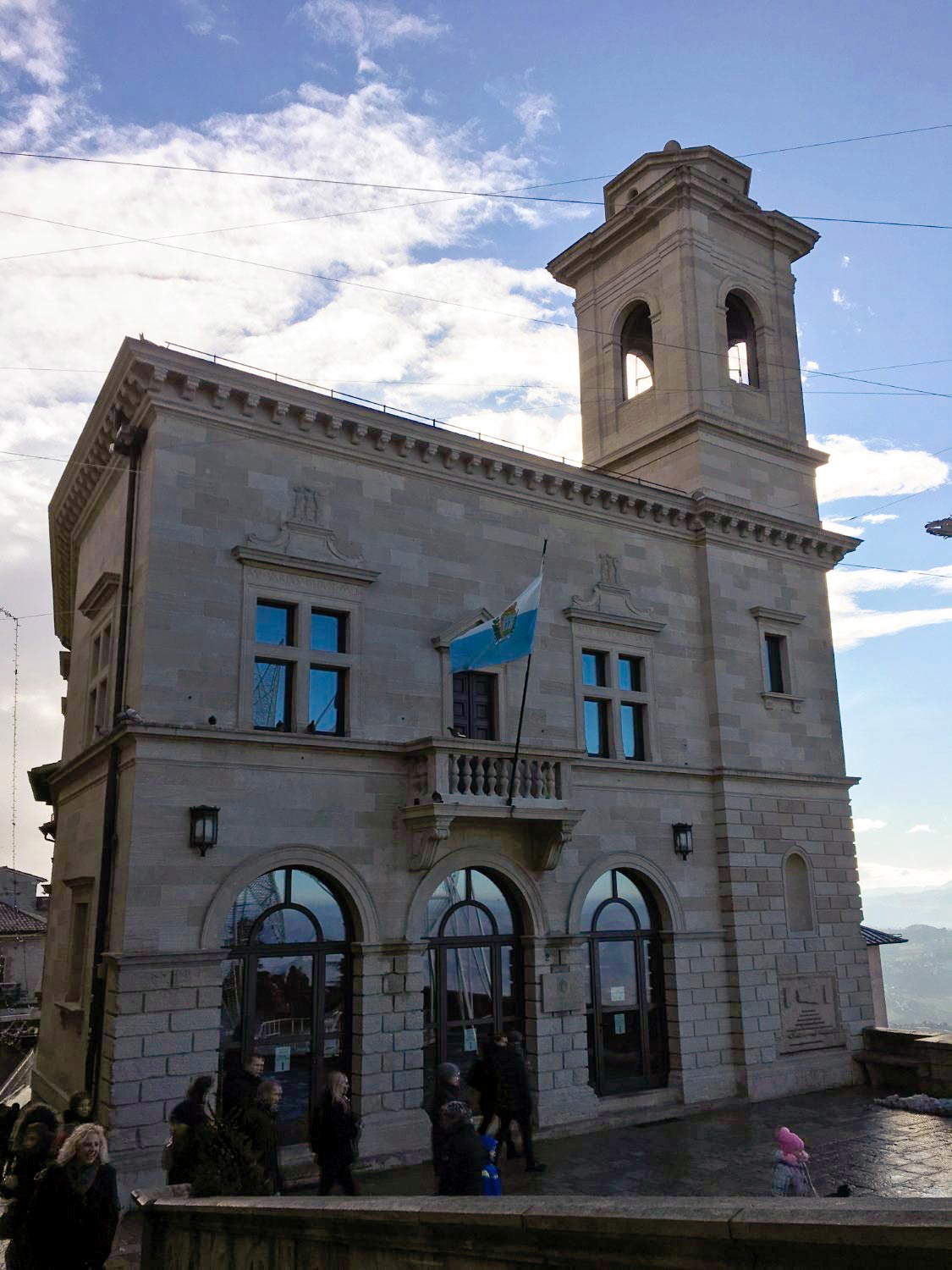
The San Marino Gallery of Modern and Contemporary Art now has 750 works dating from the first decades of the 20th century to today. These include paintings, drawings, watercolors, sculptures, photographs, installations, artist’s books, site-specific art interventions and works of public art found in the territory acquired by donation or through the formula of premium purchase, bought or commissioned directly from the artists. Famous names such as Renato Guttuso, Corrado Cagli, Emilio Vedova, Achille Perilli, Enzo Mari, Enzo Cucchi, Sandro Chia, Gian Marco Montesano, and Luigi Ontani stand out, but there are also many creations by young and emerging artists. It all started, moreover, in 1956 when the season of the Biennials opened in San Marino and, with them, the history of the Gallery of Modern and Contemporary Art began. The first exhibition, which involved more than 500 artists, was also attended by Renato Guttuso as a member of the jury.
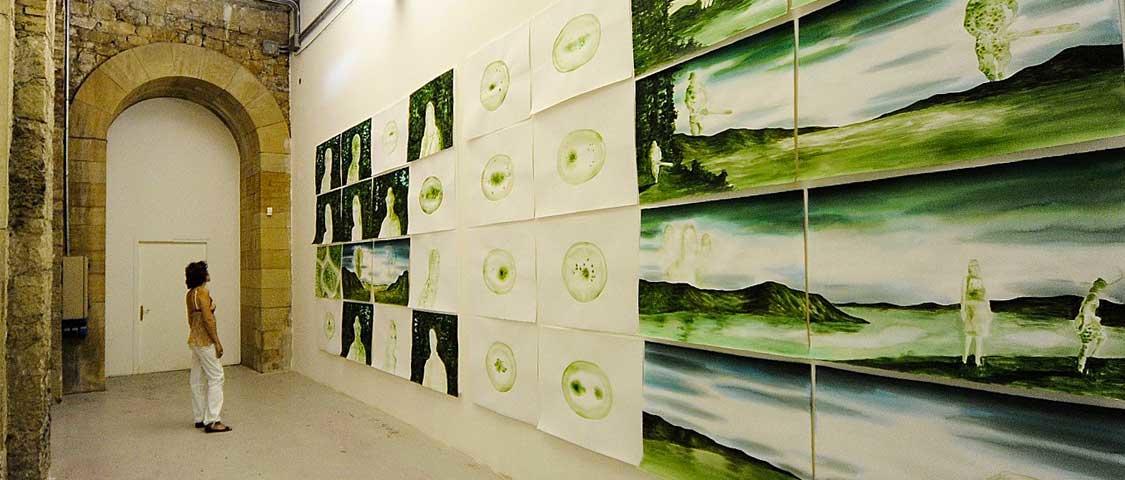
Palazzo Manzoni Borghesi houses the Museum of Modern Weapons where about two thousand firearms from World War I to World War II from Italy, Europe, and a few from outside Europe are collected. All these are arranged in five rooms in a succession of objects one more particular than the other. Also very interesting is the Museum of Ancient Weapons, which preserves weapons, uniforms, armor, experimental weapons, and prototypes. The first part of the museum is devoted to the evolution of arms at auction: from the mighty war axes of the 15th century to the slender and elegant parade halberds of the 17th century. Of particular interest among these are the war axes, equipped with very heavy blades, and a few examples of early halberds with a squat and rough shape. The second is all about armor; inside the museum are exhibits of Italian, English, and German provenance dating between 1490 and 1630. Among the armor, truly rare is a child’s breastplate, made of engraved and gilded steel, made in England around 1540 in the Royal Arms Factory in Greenwich.

The 16th-century church of San Pietro is reached through the sacristy of the Basilica. From here one descends a staircase carved out of the large bell tower. Tradition attributes the foundation of this small church directly to Saint Marino. In the apse, in an evocative atmosphere, two beds carved out of stone are visible, the place where, according to tradition, St. Marino and St. Leo rested. Such beds are also said to have thaumaturgic properties. In the crypt, the image of St. Marino with the bear, a stone relief by Romeo Balsimelli, is noteworthy, but the beautiful 17th-century wooden statue depicting St. Stone also deserves attention. The interior of the small church is also visible from the outside through the open doorway during the summer months. A visit to the interior is possible upon request to the janitor of the Basilica. Finally, the apse is very impressive since it is formed entirely from the living rock. Under the church was built in 1914 the stone crypt where the urn in which the Saint’s bones rested for many centuries is kept.
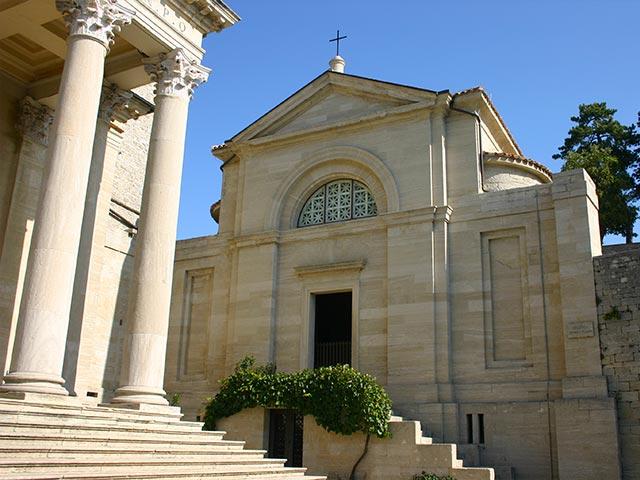
Opened in 1609, the cloistered monastery of St. Clare now houses the premises of the University of San Marino and the Museum of the Emigrant. Here until the 1960s the Poor Clares lived for more than three centuries together with the educande, that is, little girls and girls who were taught housework, but also how to read, write and prepare for social life. The structure came into being through the direct intervention of Bishop Costantino Bonelli, but the work began and was financed by the will of the institutions and people of San Marino. The state purchased the monastery a little less than 60 years ago and took charge of its complete renovation. Today it is possible to visit the garden that housed the Poor Clare nuns in their moments of refreshment, which has been restored to an ancient vegetable garden as it was then. The kitchen garden of the monastery of St. Clare was part of the 58 kitchen gardens that were recorded within the San Marino walls also called kitchen garden-gardens because of the characteristic of those times that combined the beauty of the flower with the usefulness of the kitchen garden.
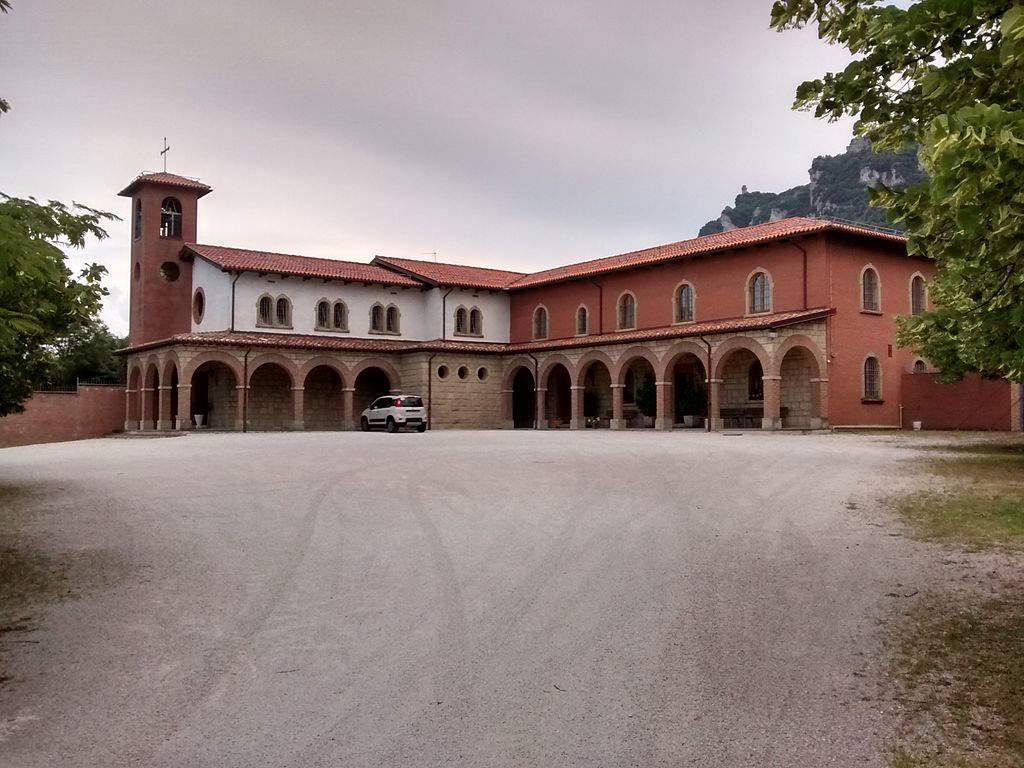
One of the most fascinating places in San Marino is definitely Borgo Maggiore. This is the second largest castle in terms of population and stretches between the Rio Cà Chiavello valley to the sources of the Ausa, also encompassing the slopes of Mount Titano and is in many ways the beating heart of the serenissima republic. The center of Borgo Maggiore is now a Unesco World Heritage Site and for centuries it has always been the place where markets and fairs were held and for this reason it has always played a central role in the economy of these lands. The Castle of Borgo Maggiore and its center do not have a walled village, on the other hand, in ancient times they were protected by controlled by guards who were joined by crossbowmen during the two most important fairs, August 24 and September 8. Borgo Maggiore is home to the Nature Center in which a copy of the fossil Titanocetus sammarinensis, an extinct cetacean that lived in the middle Miocene, is preserved.
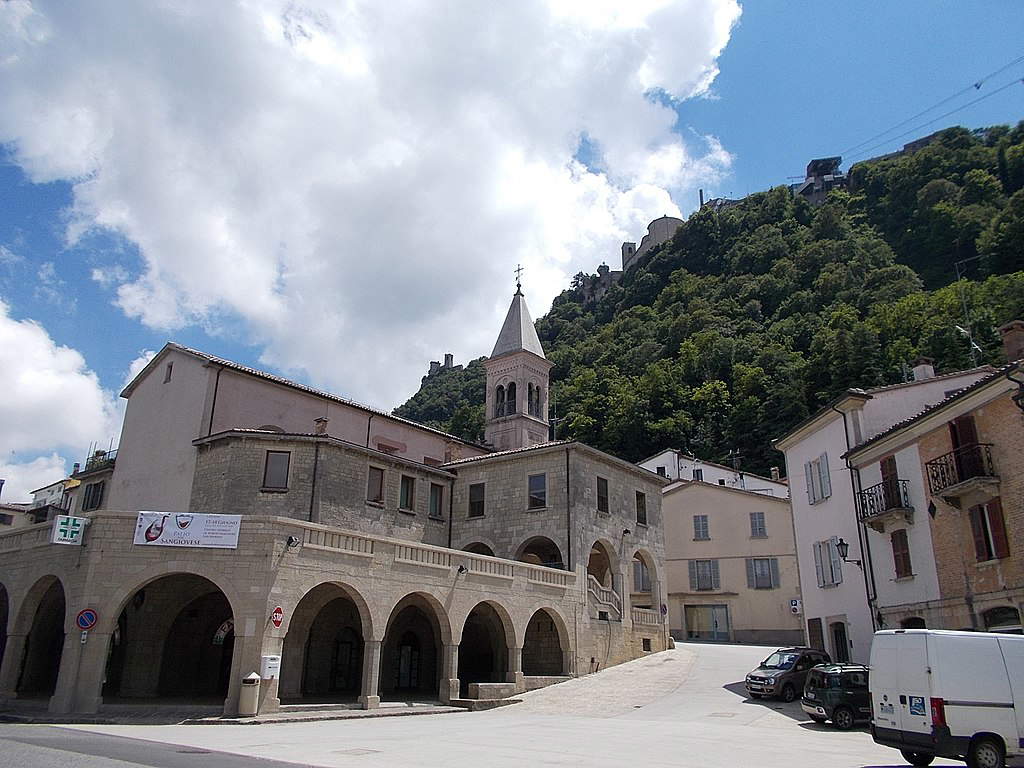
 |
| San Marino, what to see: 10 places not to miss in the Republic of Titan |
Warning: the translation into English of the original Italian article was created using automatic tools. We undertake to review all articles, but we do not guarantee the total absence of inaccuracies in the translation due to the program. You can find the original by clicking on the ITA button. If you find any mistake,please contact us.